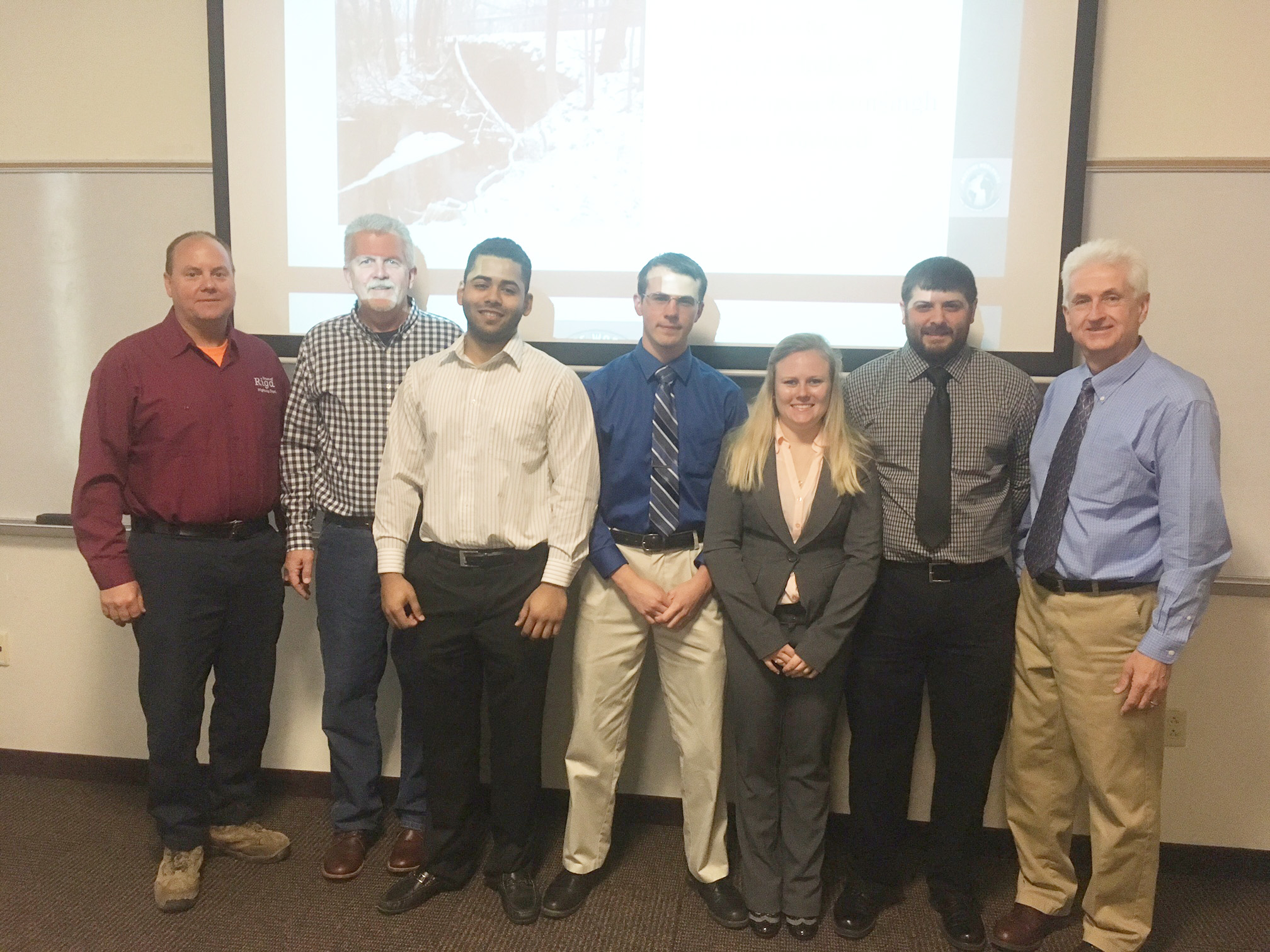Local municipalities work with RIT students to find solutions to engineering issues

Local leaders are praising a class of fifth-year civil engineering students at the Rochester Institute of Technology which provides the students with real-world experience and municipalities and private companies with possible solutions to engineering related issues.
Paul Chatfield, P.E. of Chatfield Engineers, teaches the Capstone Project class. He says the class is the culmination of all material civic engineering students have learned in their RIT studies. “It provides real-life, practical experience for students,” Chatfield says. Students are able to see, “how what they’ve learned applies to real-world situations.”
This May, Capstone Project students worked on a proposal for the Town of Riga Highway Department regarding the cross culvert (Onion Creek) under the south end of Percy Road. The culvert is rusted out, and water flow is washing out the sub-base, Riga Highway Superintendent Dave Smith says. Additionally, stone retaining walls are failing or collapsed on either side of the road.
“The project location was identified and existing conditions discussed,” he explains. Students and the town then discussed options for replacing the existing pipe.
“For each option, the students presented pros and cons respectively,” Smith says. “The group of Transatlantic Project students – two from the Dublin Institute of Technology in Ireland, and two from RIT – settled on lining the present culvert with a metal or plastic liner and then grouting between existing pipe and liner to hold it in place.”
A second group of four students decided the life cycle cost would justify the closing of Percy Road temporarily and installing a concrete box culvert. Cost is many times that of relining and would require closing the road for a season, Smith said.
“The third student group identified four options – replacement with precast box culvert; replacement with new corrugated metal pipe; installing a slip liner in existing pipe; and lastly, roadway termination,” Smith says.
He says many options were also presented for retaining walls, Gabion walls, concrete structural retaining walls and concrete wing walls to prevent erosion.
He calls the class and assistance provided by students, “a wonderful thing.”
“The student groups did a great job exploring various options at least to greater cost, each with cost schedule and cost that would be borne by residents,” Smith says. “Professor Chatfield has done an exemplary job readying these young students for work in civil engineering and public works projects.”
For the class, students must come up with solutions which involve meeting with clients, providing a design, engineering report, SEQR (environmental) analysis, field surveying, cost estimates, engineering economics analysis, sustainability considerations, etc., for each project. Chatfield says students then present their findings and recommendations to municipal leaders, planning board members and people who live where the project is located.
The presentations give students an understanding of what it is like for engineers to appear before town/village and support boards. Those attending the presentations are encouraged to ask the students questions.
“It’s an exercise for students to apply all the steps that need to be taken,” he explains, “it’s a real project and they have to deal with real people.”
In 2016, the RIT Capstone class assisted the Village of Churchville to devise a solution after studying the erosion caused by Black Creek on residents’ property along Willowbank Drive.
“I was impressed with the professionalism, hard work, knowledge and maturity of these students,” Churchville Mayor Nancy Steedman says. “They presented an engineering solution with costs to a full audience of Willlowbank Drive residents, engineers, village board members and other professionals. Their presentation described the situation, several solutions, and their recommended final solution. This has been a great partnership with the RIT Capstone program and I am anxious for when we can submit another project for consideration.”




